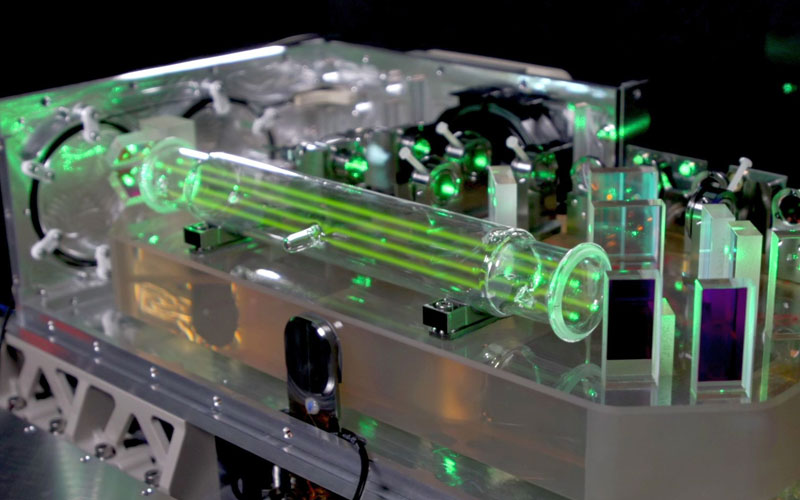
A laser clock developed by the German space agency DLR has achieved a record-setting level of accuracy for optical clocks, with a deviation of just one second every 30 million years.
The DLR laser clock project is part of the agency’s COMPASSO initiative. Launched in 2020, this initiative was created to develop key optical technologies for future satellite navigation. The work on the laser clock project is being led by the DLR Institute of Quantum Technologies in Ulm, which opened its doors in 2021.
At its core, the laser clock developed by DLR works by using a laser light precisely matched to the natural vibration frequency of iodine molecules in a gas cell. This vibration is extremely stable and predictable, making the clock highly accurate. It is approximately 100 times more accurate than the microwave-based clocks used aboard today’s satellites.
“It deviates from so-called Universal Time by less than 100 picoseconds per day. A picosecond is one millionth of a millionth of a second. This deviation corresponds to one second every 30 million years,” explained Claus Braxmaier of the DLR Institute of Quantum Technologies. “We are closing the gap between the accuracy of conventional satellite clocks and the large, heavy, high-end atomic clocks that currently determine our universal time in national metrology institutes.”
Microwave-based clocks used in navigation satellites enable meter-scale accuracy. The new generation of European Galileo satellites will utilize atomic clocks to deliver accuracy down to just 20 centimeters. Laser clocks will push this even further, allowing for centimeter precision.
DLR is currently working towards a flight version of the laser clock, which will be tested aboard the International Space Station from 2027. In February 2021, DLR signed a €16.8 million contract with Airbus to host the demonstration aboard the space station’s Bartolomeo platform. This demonstration version of the clock will be approximately the size of two shoeboxes. According to DLR, one of the primary challenges for its operation in space will be maintaining the temperature of the iodine gas cell at 20 degrees Celsius, regardless of whether it is in shade or sunlight.




